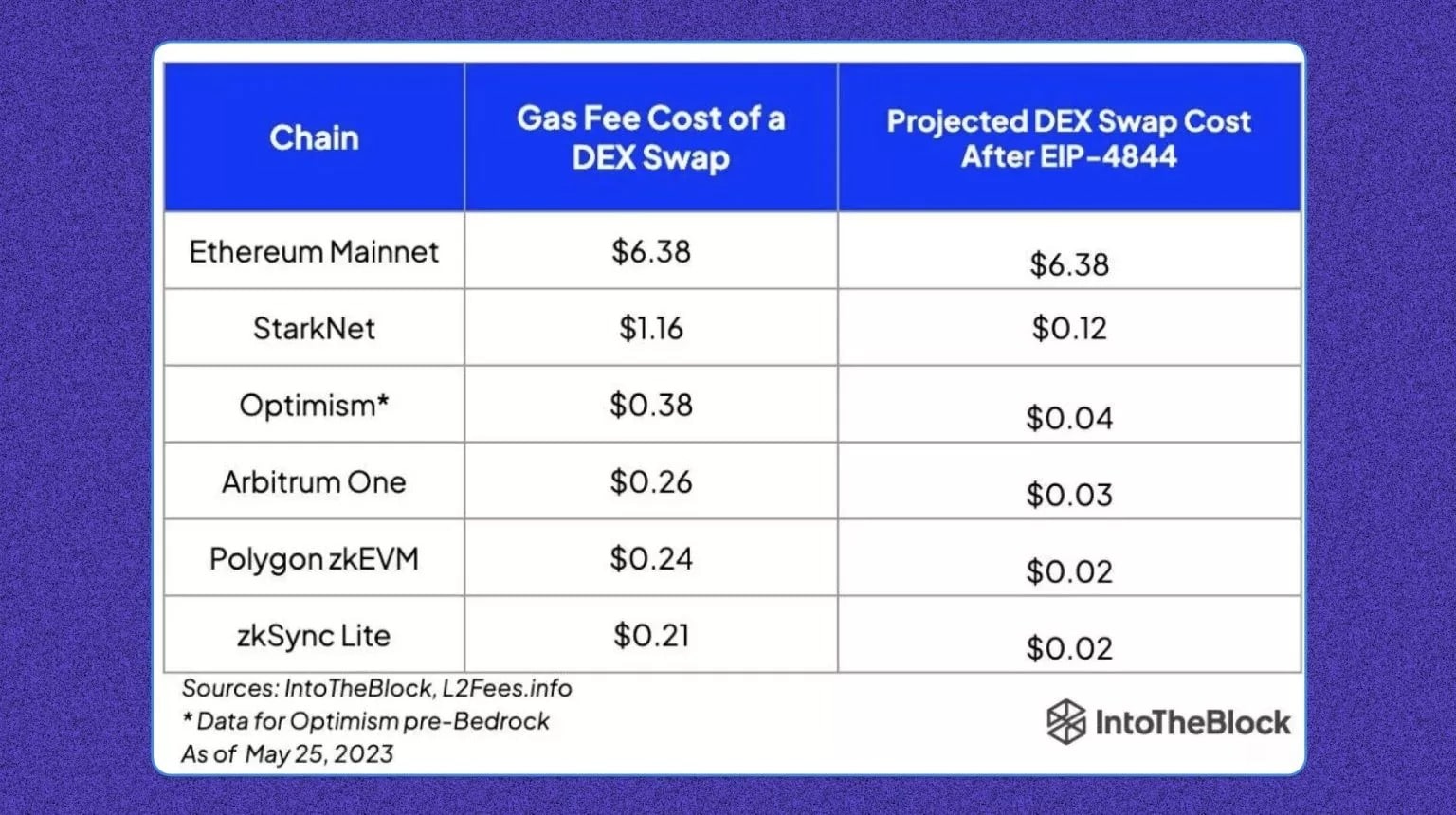On Wednesday, March 13, 2024, the Dencun update was successfully deployed on the Ethereum (ETH) core network. This update activates Proto-Danksharding, a new feature that should solve the ecosystem’s scalability problems. We take a look at the expected impacts of this update.
Dencun is deployed on the Ethereum mainnet
This Wednesday, March 13, 2024 at around 2:55 pm, the Deneb and Cancun updates, better known by the contraction Dencun, were successfully deployed on the Ethereum mainnet. Expected for several months, they represent a major milestone in the Ethereum roadmap.
Following The Merge (in September 2022) and Shapella (in April 2023) updates, which formalized the network’s move to a Proof-of-Stake consensus mechanism, the next milestone is The Surge. The overall ambition is to increase the scalability of Ethereum’s second-layer solutions and reach the 100,000 transactions per second mark, while lowering transaction costs.
In order to achieve these goals, the most eagerly awaited step was the Dencun update. It brings a batch of 9 Ethereum Improvement Proposals (EIPs), the most important of which is probably EIP-4844. It introduces Proto-Danksharding and the famous Ethereum data blobs
Proto-Danksharding and “blobs”, what are we talking about?
As you probably know, one of Ethereum’s major problems is scalability. In other words, the inability to accommodate a large number of users without degrading performance levels – particularly in terms of latency and network costs.
To address this issue, one of the solutions envisaged by Ethereum developers is sharding. Put simply, this is a mechanism that aims to divide the network into smaller chunks that act as separate blockchains, alleviating the cost of data storage and reducing transaction processing time.
However, the complete sharding of the Ethereum network requires an enormous amount of work and numerous major updates. Thus, the medium-term solution was to implement Proto-Danksharding, an upgrade that brings the majority of sharding’s own components but with a particular focus on second-layer solutions.
The main new feature is the introduction of the famous data “blobs”, the idea of which is to create a dedicated space for storing transaction data carried out on second-layer networks.
In simple terms, blobs will organize data from the various layer 2 networks into packets and integrate them into a block on the Ethereum blockchain. As a result, instead of checking each and every transaction data, the Ethereum network will only have to confirm that the blob attached to the block contains the correct data.
As well as saving a considerable amount of time, this also saves a considerable amount of space on Ethereum, as these blobs are destined to be deleted at regular intervals.
What impact will this have on the Ethereum ecosystem?
The most anticipated impact of implementing “blobs” on Ethereum is the drastic reduction in transaction costs on second-layer networks. According to IntoTheBlock’s estimates, we can expect a division ranging from a factor of 10 to 50, depending on the network.

Estimated reduction in transaction costs on layer 2 networks thanks to EIP-4844
To understand this, we need to look at how second-layer networks work. These gather several transactions together and then integrate them into a transaction on the Ethereum blockchain. As things stand, however, this is particularly expensive.
In fact, this is the main reason why users of Ethereum’s second-layer networks pay such high fees to carry out transactions. Nevertheless, the famous blobs are changing the way data is stored on the network, making it much faster and cheaper.
The important thing to remember is that the Dencun update is a major milestone on the Ethereum roadmap, symbolizing a first step towards network sharding. For the time being, EIP-4844 brings major improvements in the way data is stored for second-layer networks, making them much more efficient and less expensive.
With a view to mass adoption by the general public, this is an essential and welcome step for the Ethereum ecosystem.
